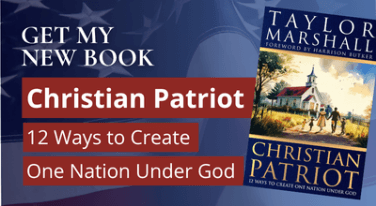Why You Should Wear the Miraculous Medal
When I was still Protestant, I remember reading St Ephrem the Syrian. I was amazed by how often he spoke of the Mother of Christ and how much he praised her in his poetic hymnody. Ephrem was a Syrian Christian living from AD 306 – 373. He is early and he undoubtedly teaches that Mary was without stain, unlike other humans. He is probably the earliest and most explicit Patristic witness to the dogma of the Immaculate Conception.
As a Protestant, I got it. I was never really bothered by the fact that Mary would be sinless. In fact, it made sense to me. I was suspect of the doctrine simply because Paul said that “all had sinned” but I could see how the doctrine could be preserved and read in context.
I also learned about the Miraculous Medal – which is a small medal that commentaries the Immaculate Conception. It’s really called the Medal of Immaculate Conception, but so many miracles have been worked through it that it is now simply called the Miraculous Medal. Wearing it is a sign that you are particularly devoted to the Blessed Virgin Mary as the Immaculate Mother and Enemy of Satan.
Here’s the story about the medal and why you should wear it:
On July 18, 1830, Saint Catherine Labouré awoke hearing a voice of a child calling her to the chapel located in the Rue du Bac, Paris. The Blessed Virgin Mary said to her, “God wishes to charge you with a mission. You will be contradicted, but do not fear; you will have the grace to do what is necessary. Tell your spiritual director all that passes within you. Times are evil in France and in the world.”
Catherine reported that the Blessed Mother returned during evening meditations. She displayed herself inside an oval frame, standing upon a globe, wearing many rings of different colors, most of which shone rays of light over the globe. Around the margin of the frame appeared the French words Ô Marie, conçue sans péché, priez pour nous qui avons recours à vous (O Mary, conceived without sin, pray for us who have recourse to thee).
As Catherine watched, the frame seemed to rotate, showing a circle of twelve stars, a large letter M surmounted by a cross, and the stylized Sacred Heart of Jesus crowned with thorns and Immaculate Heart of Mary pierced with a sword. Asked why some of her rings did not shed light, Mary reportedly replied, “Those are the graces for which people forget to ask.” Catherine then heard Mary ask her to take these images to her father confessor, telling him that they should be put on medallions, and saying “All who wear them will receive great graces.”
One of the most remarkable facts recorded in connection with the Miraculous Medal is the conversion of a Jew, Marie-Alphonse Ratisbonne of Strasburg, who had resisted the appeals of a friend to enter the Church. Alphonse Ratisbonne consented, somewhat reluctantly, to wear the medal, and being in Rome, he entered, by chance, the church of Sant’Andrea delle Fratte and beheld in a vision the Blessed Virgin Mary exactly as she is represented on the medal; his conversion speedily followed.
If you’re still not convinced, listen to this powerful sermon on the Miraculous Medal and share it with your friends: On the Miraculous Medal (mp3). On a scale from one to ten, I give this sermon a ten. Please listen to it.
Do you enjoy reading Canterbury Tales by Taylor Marshall? Make it easier to receive daily posts. It’s free. Please click here to sign up by Feed or here to sign up by Email. Please also explore Taylor’s books about Catholicism at amazon.com.
What to Watch Next
Get your copy of Christian Patriot (4 link options): Order on Amazon https://amzn.to/4oZPXuJ Order on Bookshop.com (currently...
Pope Leo XIV met today with the President of Israel—lots of discussion about the photos. Even more...
Just after the horrific tragedy last week, Pope Leo met with and took a photo with Father...
SHOP THE TAYLOR MARSHALL STORE
Dive Deeper

GET CONFIDENT IN YOUR FAITH
Explore the fascinating world of Catholic teachings with Dr. Marshall. Together you’ll unpack the brilliant answers the Church gives to tough questions about the Faith. The best part: you go at your own pace. Start this exciting journey today.


 >
>




